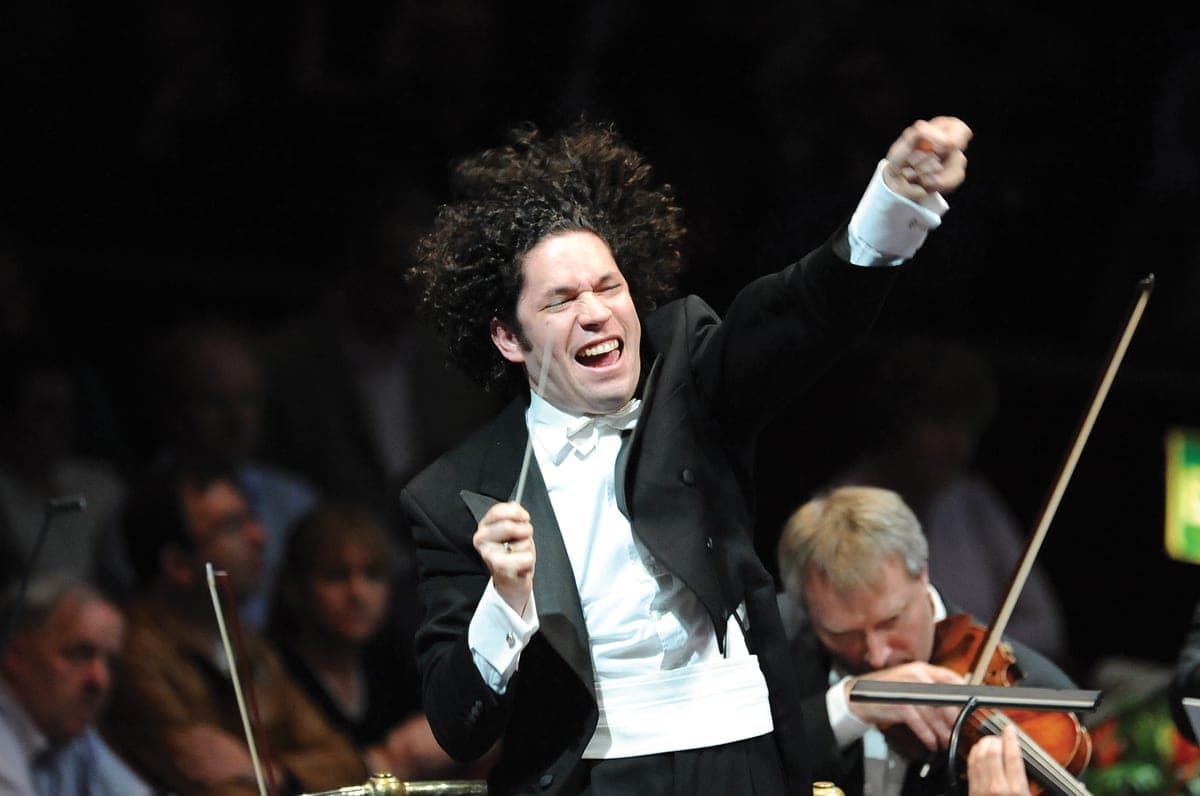Markov-Switching Models for Musical Interpretation
Daniel J. McDonald

Musical taste
- Easy to describe music you like:
“Jazzy sound”
“Strong beat”
“good lyrics”
“anything by Taylor Swift”
Harder to describe a performance
Classical music is mainly about performances of the same music
How do we think about which ones we like?
Primer on “classical” music
- Written between 6th century and today
- Includes music written during the Classical period (1750–1820)
The real difference is that when a composer writes a piece of what’s usually called classical music, he puts down the exact notes that he wants, the exact instruments or voices that he wants to play or sing those notes—even the exact number of instruments or voices; and he also writes down as many directions as he can think of.
–Leonard Bernstein
Generally much more musically complicated



What’s different?
- Mistakes
- Extraneous noise
- Recording quality
- Articulation / Legato / Bowing / Breathing
- Dynamics
- Tempo / Rubato

Musical tempo
Notes change speed
Sometimes purposeful
Speed is important for interpretation
What is this “music”?
Important musical terms

Notes
Beat
Measure
Time signature
Tempo
Dynamics
All those little black dots
Strongly felt impetus
Collections of notes delimited by vertical “barlines”
Number of beats / measure; type of note that gets the beat
The prevailing speed, measured in bpm
Loudness of the note
Data
- CHARM Mazurka Project

Focus on timing only (dynamics also available)
50 recordings: Chopin Mazurka Op. 68 No. 3
Recorded between 1931 and 2006
45 different performers
Chopin & Mazurkas
Fryderyk Chopin (1810–1849)
Born in Poland
Moved to Paris at 21
Virtuoso pianist
Wrote mainly piano music
Mazurka
A Polish dance
Chopin composed at least 58 for Piano
Repetition is very important
Certain rhythmic figures

Modelling tempo
Tempo regimes
1. Constant tempo
2. Accelerando (speeding up)
3. Ritarando (slowing down)
4. Tenuto (emphasis)

Transition diagram
1. Constant tempo
2. Accelerando (speeding up)
3. Ritarando (slowing down)
4. Tenuto (emphasis)
Transition diagram
1. Constant tempo
2. Accelerando (speeding up)
3. Ritarando (slowing down)
4. Tenuto (emphasis)
Before \(|\mathcal{S}| = 4\). Now, \(|\mathcal{S}| = 11\)
The HMM
HMM Inference
Viterbi algorithm gives estimates of \(\{S_k\}\)
Computation is \(O(n)\): likelihood of \(p\) and estimates of \(\{S_k\}\)
Inside of EM (Baum-Welch) gives estimates of \(p\)
Intentions vs. observations
Switching Kalman filter
Kalman filter algorithm
- Developed in the late 1950s to track missiles
\[ \begin{aligned} X_{k+1} &= d_k + T_k X_k + \eta_{k+1}, & \eta_{k+1} &\sim \textrm{N}(0, Q_{k+1}),\\ Y_k &= c_k + Z_k X_k + \epsilon_{k}, &\epsilon_k & \sim \textrm{N}(0, G_k).\\ \end{aligned} \]
Assume \(X_0\) is Gaussian
KF just tracks mean and variance of \(X_k\ |\ \{Y_i\}_{i=1}^k\)
Does this iteratively for each \(k\)
kfilter()gives estimate of \(\{X_k\; |\; Y_1,\ldots,Y_k\}_{k=1}^n\)kfilter()also gives likelihood of \(\theta\)ksmoother()gives estimate of \(\{X_k\; |\; Y_1,\ldots,Y_n\}_{k=1}^n\)

Kalman filter inference
\[ \begin{aligned} X_{k+1} &= {\color{Plum} d_k} + {\color{Plum} T_k} X_k + \eta_{k+1}, & \eta_{k+1} &\sim \textrm{N}(0, {\color{Plum} Q_{k+1}}),\\ Y_k &= {\color{Plum} c_k} + {\color{Plum} Z_k} X_k + \epsilon_{k}, &\epsilon_k & \sim \textrm{N}(0, {\color{Plum} G_k}).\\ \end{aligned} \]
Parameter matrices may depend on
- Parameter vector \(\theta\)
- Current or previous values of \(X\) and \(Y\)
Kalman filter inference
\[ \begin{aligned} X_{k+1} &= {\color{Plum} d_k} + {\color{Plum} T_k} X_k + \eta_{k+1}, & \eta_{k+1} &\sim \textrm{N}(0, {\color{Plum} Q_{k+1}}),\\ Y_k &= {\color{Plum} c_k} + {\color{Plum} Z_k} X_k + \epsilon_{k}, &\epsilon_k & \sim \textrm{N}(0, {\color{Plum} G_k}).\\ \end{aligned} \]
kfilter() \(+\) ksmoother() algorithms gives estimates of \(\{X_k\}\)
Computation is \(O(n)\): likelihood of \(\theta\) and estimates of \(\{X_k\}\)
Inside of EM gives estimates of \(\theta\)
Switching Kalman filter (for our model)
\[ \begin{aligned} X_{k} &= d(s_k,\ s_{k-1}) + T(s_k,\ s_{k-1}) X_{k-1} + \eta_{k}\\\\ Y_k &= c(s_k) + Z(s_k) X_k + \epsilon_{k}\\\\ \eta_{k} &\sim \textrm{N}(0, Q(s_k,\ s_{k-1}))\\\\ \epsilon_k & \sim \textrm{N}(0, G(s_k)) \end{aligned} \]
We want to estimate: \(\theta\), \(p\), \(\{X_k\}\), and \(\{S_k\}\)
This costs \(O(|\mathcal{S}|^n)\), \(|\mathcal{S}|=11\), \(n=231\)
We don’t know the path through the discrete states
Discrete particle filter — dpf()
Track at most \(J\) paths through the \(|\mathcal{S}|^n\) tree
At time \(k\), receive \(J\) paths: a state sequence and a weight
Propagate each of the \(J\) paths forward, creating \(\approx J^2\)
Using the weights, sample the \(\approx J^2\) possibilities to get only \(J\)
iterate forward through time until done, return \(J\) sequences and their weights
The complete pseudocode
For each performance:
- Iterate 1–3 to maximize for \(\theta \in \Theta\), produce \(\widehat\theta\)
- Guess a parameter vector \(\theta\) (in some sensible way)
dpf()gives greedy state sequence \(\{\widehat{S}_k\}_{k=1}^n\)- It gives the likelihood as a side effect via
kfilter()
- Rerun
dpf()andksmoother()at \(\widehat{\theta}\) to get \(\{\widehat{S}_k\}_{k=1}^n\) and \(\{\widehat{X}_k\}_{k=1}^n\)
Decoding mazurkas
The estimated parameters
For each performance, we estimate \(p\) and \(\theta\) by penalized maximum likelihood.
Abuse notation and redefine \(\theta := (p, \theta)\)
average speed in different states
some variance parameters
transition probabilities
We have strong prior information.
Distance matrix on parameters
Use Mahalanobis \[d(\theta,\theta') = \sqrt{(\theta-\theta')^\mathsf{T} \mathbf{V}^{-1}(\theta-\theta')}\]
\(\mathbf{V}\) is prior covariance matrix
Incorporates correlations correctly on probability vectors
Some performances have no close neighbors


Probability of “stress”
Cluster 1
Cluster 2
Similar performances
Arthur Rubinstein
Cortot?
In summary
We develop a switching model for tempo decisions
We give an algorithm for performing likelihood inference
We estimate our model using a large collection of recordings of the same composition
We demonstrate how the model is able to recover performer intentions
We use the learned representations to compare and contrast recordings
Future work
Similar model for dynamics
Can we do this fast and “online”?
Use it for teaching?
Collaborators, funding, etc.





Markov Models for Music — dajmcdon/hmms-chopin-2025